Normal B-cell subsets and reactive changes:
Blood and bone marrow specimen:
- The normal range for kappa:lambda ratio is between 1-3 (range 0.8-4)
- Small subsets of CD5+CD23+ B-cells with normal CD20 expression and polytypic kappa:lambda expression are frequently observed
- CD10+ B-cell precursors can be observed in the blood at low frequency in infants/children or in the context of regenerating bone marrows or infections
- CD19+CD20-CD38intermediate subsets suggesting plasmacytoid differentiation can sometimes be observed in regenerating marrows or infection
Normal blood sample:
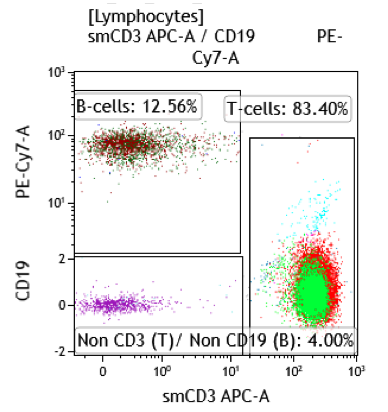
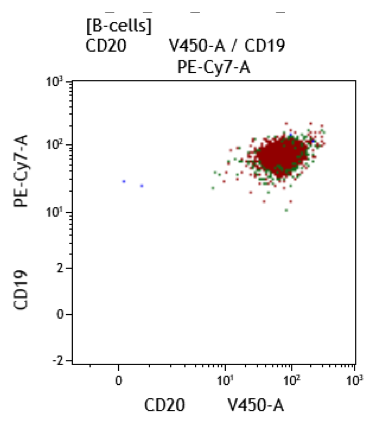
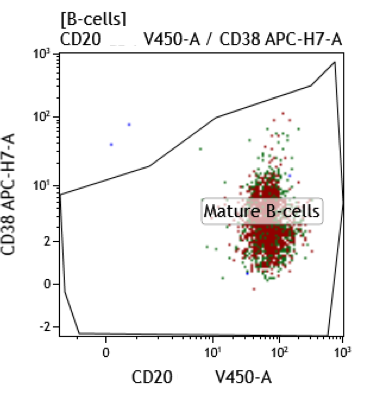
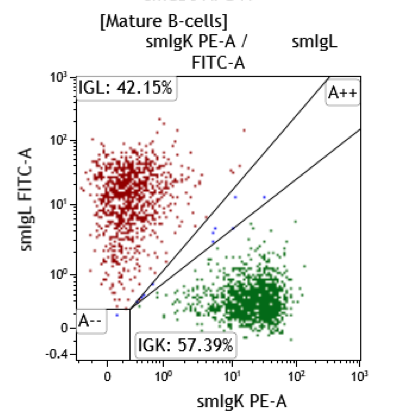
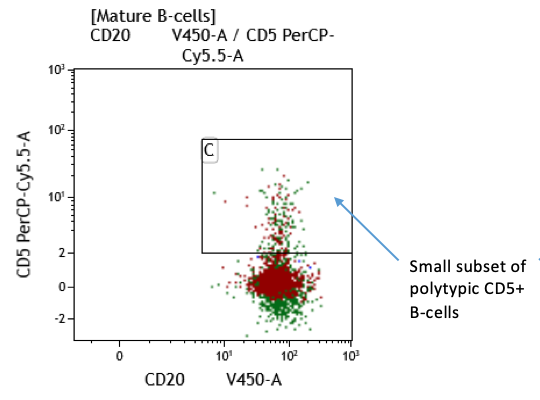
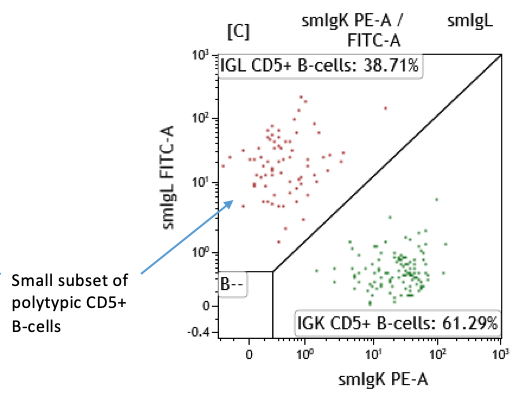
Peripheral blood sample post-bone marrow transplant:
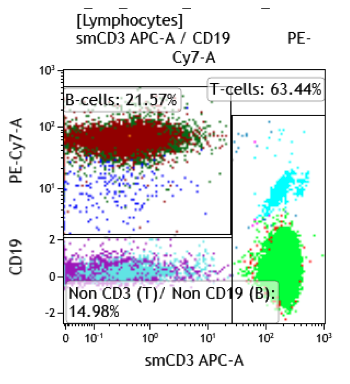
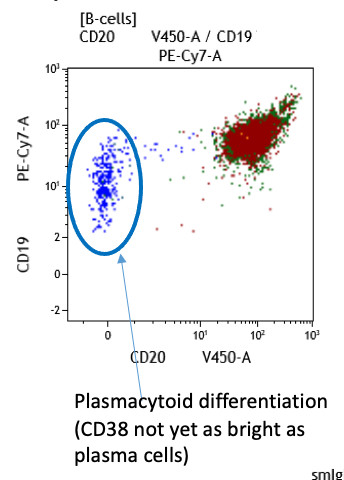
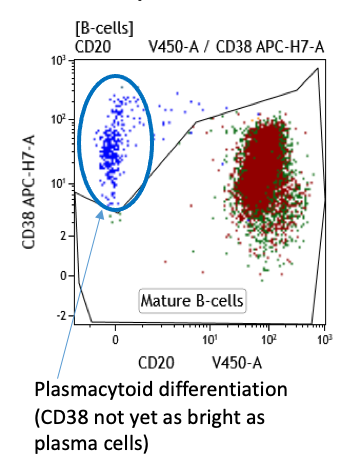
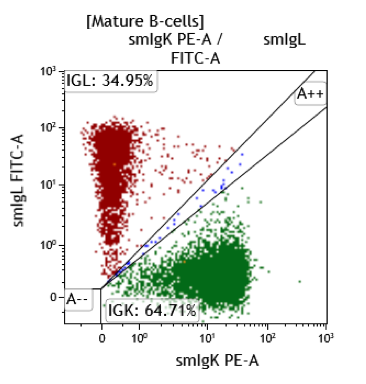
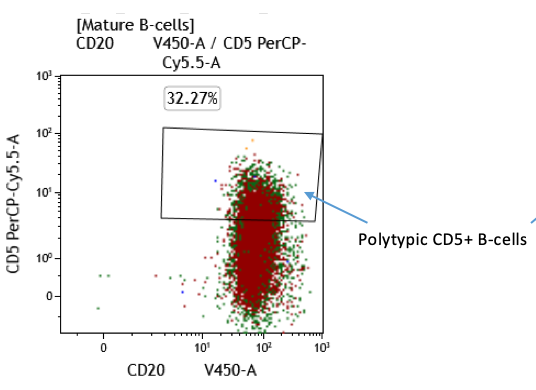
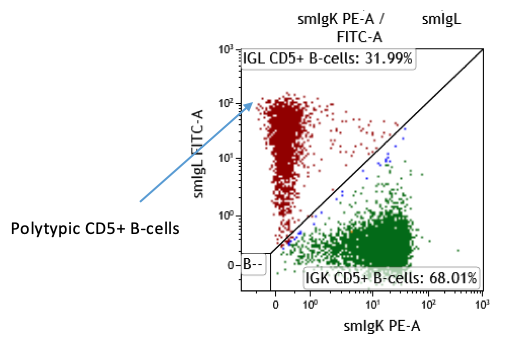
Lymph nodes and tonsils:
- The kappa:lambda ratio can show a wider range of 0.4-4.7
- Note that cases of reactive follicular hyperplasia with light chain restriction have been described; therefore monotypic populations are not always malignant and correlation with histology is required to assess for architectural/cytologic atypia.
- CD10+ CD20 bright CD38 bright are characteristic of follicular hyperplasia
- CD5+ B-cells can reach up to 1/3 of B-cells in activated follicles
Reactive lymphoid hyperplasia in a lymph node:
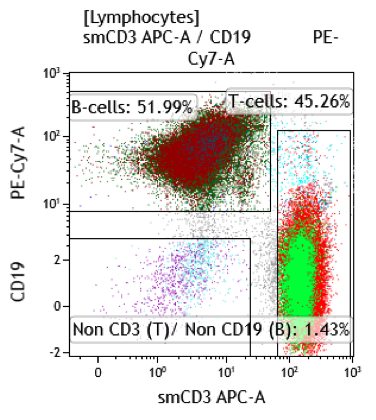
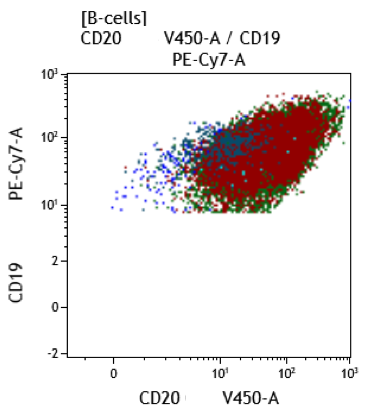
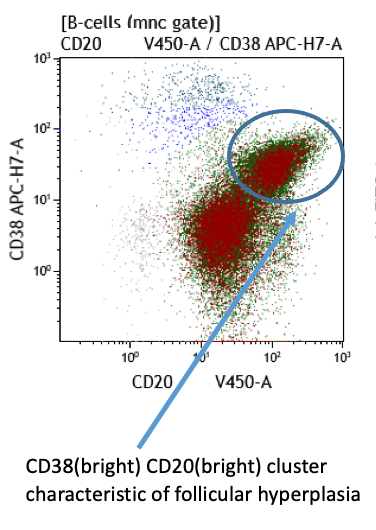
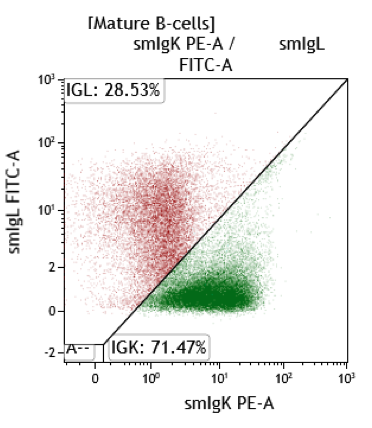
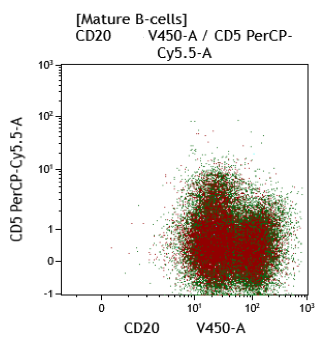
Next page: Approach to clonal B-cell populations
Return to Flow Cytometry Approach to clonal B-cell populationsHome
